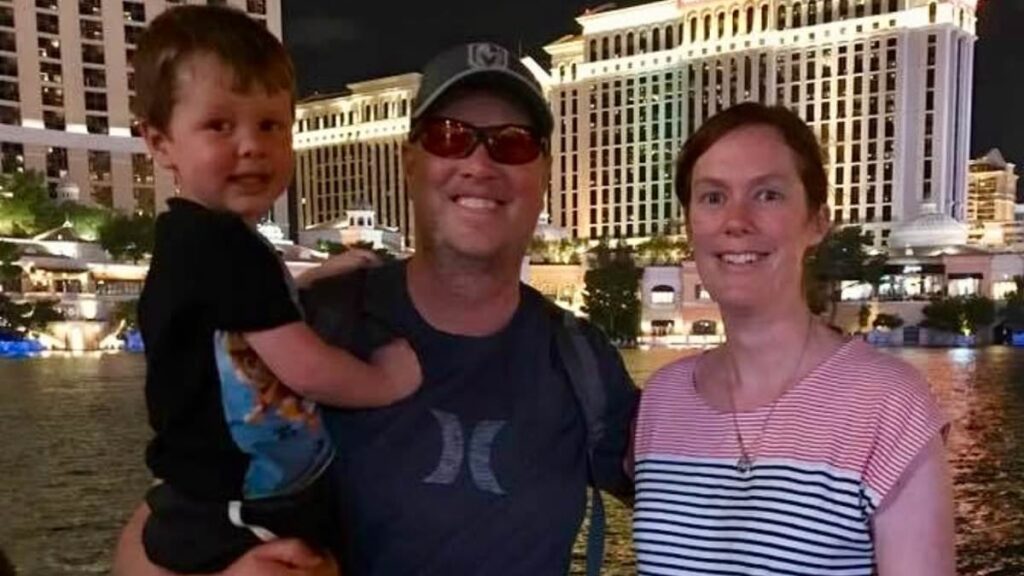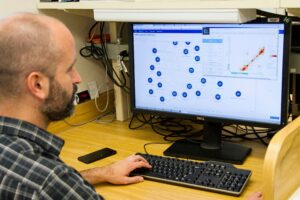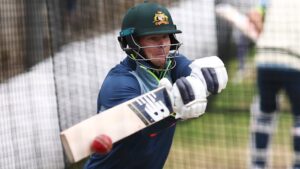
At 33, Sharon Kirkwood felt an unusual ache in her leg. Within two years, she faced a devastating diagnosis that left her unable to walk or speak—a condition that was once considered rare among young individuals. Sharon’s journey with motor neurone disease (MND) is a testament to human resilience and the urgent need for medical research.
Sharon first noticed something was amiss while playing netball. “Looking back, I do remember feeling just a little bit more uncoordinated than normal,” she recalls. At the time, she was a fit mother of two, balancing a demanding teaching career and family life in Canberra. Initially attributing her symptoms to fatigue, Sharon’s condition soon worsened, leading to a limp and increasing concern.
The Diagnosis Journey
In September 2017, Sharon sought medical advice, suspecting something more serious. Despite initial tests ruling out conditions like multiple sclerosis, her symptoms persisted. A neurologist dismissed her concerns as psychosomatic, advising relaxation techniques. However, Sharon’s intuition led her to seek a second opinion, which proved pivotal.
The new neurologist referred Sharon to an MND specialist, where she received the diagnosis she feared but expected: motor neurone disease. “It was probably more of a relief to actually have an answer,” Sharon reflects, despite the life-altering implications.
Understanding Motor Neurone Disease
MND is a progressive neurological disorder that attacks nerve cells controlling muscles for movement, speech, and breathing. As muscles weaken and waste away, the disease leads to complete paralysis and is terminal, with most patients succumbing within two to five years. Notable figures like Stephen Hawking and Lou Gehrig have battled this condition, highlighting its indiscriminate nature.
“MND is the cruellest disease imaginable,” says leading neurologist Dominic Rowe, emphasizing the relentless progression and impact on patients’ lives.
Life with MND
Sharon’s diagnosis marked the beginning of a challenging journey. “I was still trying to live a relatively normal life—working, parenting, socializing,” she shares. However, the disease gradually stripped away her independence, from walking unaided to performing basic tasks like dressing and eating.
Despite these challenges, Sharon maintains a positive outlook. “I try to focus on finding things to be grateful for,” she says, cherishing moments with her family. Her children, Harrison and Hayden, were young when she was diagnosed, allowing for gradual discussions about her condition.
“MND has taken so much from me, but I refuse to let it take my positive attitude,” Sharon asserts, embodying resilience in the face of adversity.
The Role of Support and Technology
Sharon’s care team includes specialists across various fields, from neurology to palliative care, underscoring the complexity of managing MND. Technology also plays a crucial role; Sharon uses an ‘eye-gaze’ computer to communicate, converting eye movements into speech.
“It’s not until you lose both your voice and use of your hands that you realize how important they are,” Sharon notes, highlighting the profound impact of MND on personal identity and interaction.
Advocacy and Awareness
While there is no cure for MND, Sharon dedicates much of her time to raising awareness and supporting research. Her story serves as a powerful reminder of the need for continued medical advancements and support for those affected by this relentless disease.
Sharon’s journey, marked by loss and adaptation, is a poignant illustration of human strength. Her advocacy efforts not only honor her personal fight but also contribute to a broader understanding and urgency in tackling MND.
As Sharon continues to navigate life with MND, her story inspires others to appreciate the simple joys and to support the quest for a cure. “I just wish I could go back and experience greater appreciation for all those things I used to take for granted,” she reflects, a sentiment that resonates deeply with all who hear her story.






